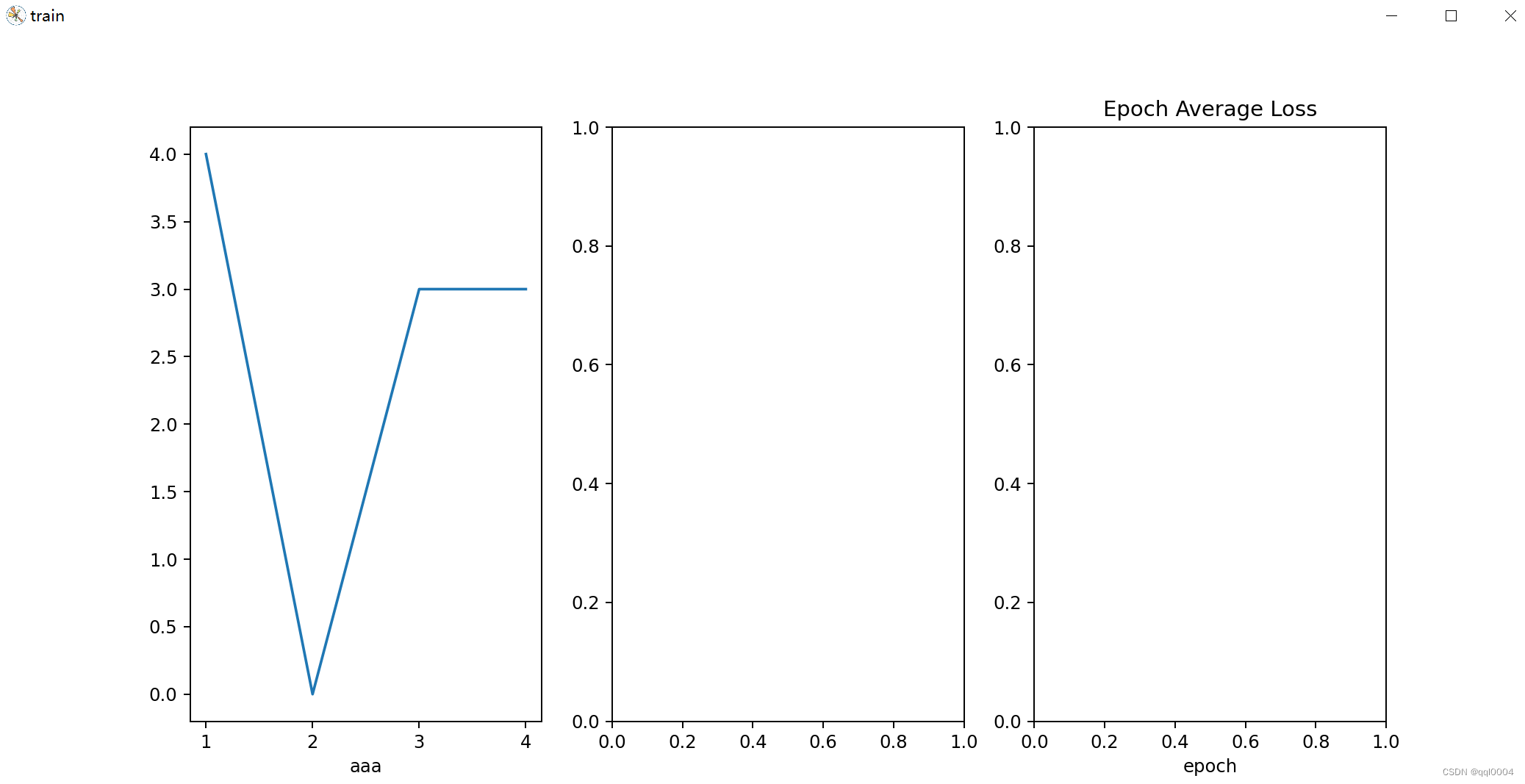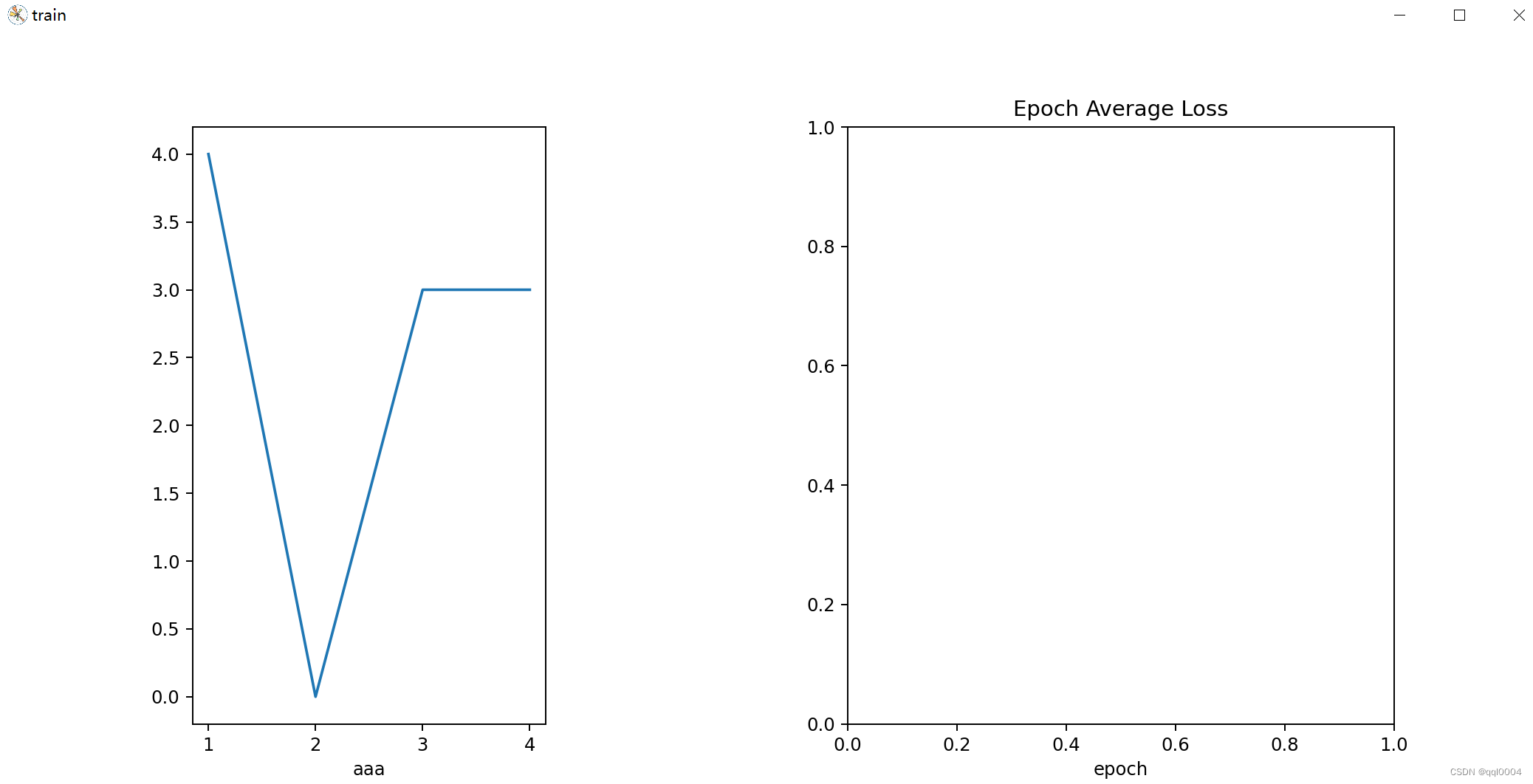热门标签
热门文章
- 1联邦学习FedAvg算法复现任务_fedavg复现
- 2OVF文件
- 3Centos7 mysql5.5升级为mysql5.7 非rpm 以 tar包的方式_mysql rpm升级到tar
- 4计算机网络层次划分及协议了解_协议与层次划分
- 5如何在无网的linux服务器上配置深度学习环境_在无网环境下给服务器配置环境
- 6htpp://bangbang.58.com/pc.html,new-website/package-lock.json at master · cdnjs/new-website · GitHub...
- 7java实现沙箱测试环境支付宝支付(demo)和整合微信支付和支付宝支付到springmvc+spring+mybatis环境全过程(支付宝和微信支付、附源码)...
- 8码云Gitee Clone仓库到本地失败(git did not exit cleanly(exit code 128))_本地无法clone gitea 仓库
- 9HarmonyOS-module.json5配置文件_device type in the module.json5/config.json file c
- 10实验四 交换机的Telnet远程登陆配置_交换机的telnet远程登陆配置心得体会
当前位置: article > 正文
matplotlib.pyplot subplots、plot、xlabel等_plt.subplot(1, 3, 1)
作者:菜鸟追梦旅行 | 2024-02-29 16:53:47
赞
踩
plt.subplot(1, 3, 1)
一、plt.subplots(nrows, ncols, ...)
- import matplotlib.pyplot as plt
- fig, axes = plt.subplots(1, 3, num='train', figsize=(12, 6))
上述代码创建了一个有1行3列axes的figure,figure的大小为(12,6),figure的名字为'train'。如下图所示。此时plt指向最右边的ax(因为是最后创建的)。

上述代码等价于:(和上面一样,此时plt指向最右边的ax)。
- import matplotlib.pyplot as plt
- plt.figure("train", (12, 6))
- plt.subplot(1,3,1)
- plt.subplot(1,3,2)
- plt.subplot(1,3,3)
二、plt当前所指的fig/ax永远是最新创建的fig/ax,在调用plt.xxx函数时,要注意操作的对象是哪一个fig的哪个ax。(但plt.show会显示所有figure)
- import matplotlib.pyplot as plt
- import numpy as np
-
- np.random.seed(0)
- epochs = 4
- epoch_loss_values = np.random.randint(5, size=epochs)
-
- fig, axes = plt.subplots(1, 3, num='train', figsize=(12, 6))
- x = [i + 1 for i in range(len(epoch_loss_values))]
- y = epoch_loss_values
- axes[0].plot(x, y) # ax也有plot方法
- axes[0].set_xlabel('aaa') # ax有set_xlabel方法,没有xlabel方法
- plt.xlabel("epoch")
- plt.title("Epoch Average Loss")
结果如下:

三、一个fig中新创建的ax可能会覆盖旧的ax
- import matplotlib.pyplot as plt
- import numpy as np
-
- np.random.seed(0)
- epochs = 4
- epoch_loss_values = np.random.randint(5, size=epochs)
-
- fig, axes = plt.subplots(1, 3, num='train', figsize=(12, 6))
- x = [i + 1 for i in range(len(epoch_loss_values))]
- y = epoch_loss_values
- axes[0].plot(x, y)
- axes[0].set_xlabel('aaa')
- plt.subplot(1,2,2)
- plt.xlabel("epoch")
- plt.title("Epoch Average Loss")
结果如下:

声明:本文内容由网友自发贡献,不代表【wpsshop博客】立场,版权归原作者所有,本站不承担相应法律责任。如您发现有侵权的内容,请联系我们。转载请注明出处:https://www.wpsshop.cn/w/菜鸟追梦旅行/article/detail/166926
推荐阅读
相关标签


